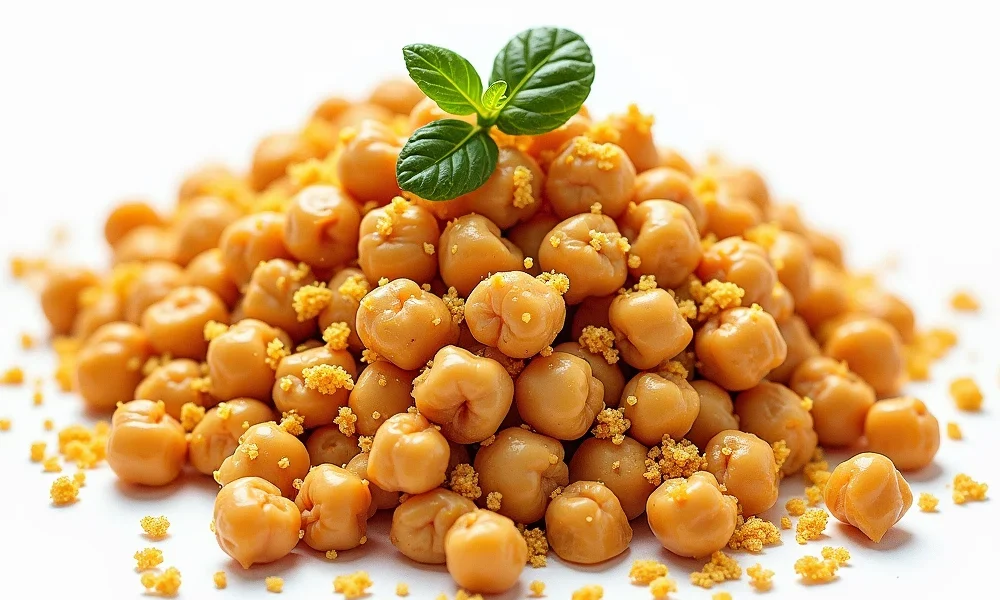
Çeciir – “Nutritious Turkish Culinary Gem”
Çeciir, a cornerstone of Turkish cuisine, is a versatile and nutritious ingredient that’s been cherished for centuries. This article dives into the world of çeciir, exploring its origins, preparation methods, health benefits, and culinary applications. Whether you’re a food enthusiast or simply curious about this Turkish staple, you’ll discover why çeciir deserves a spot in your kitchen.
What is Çeciir?
Çeciir is a traditional Turkish food that’s been around for ages. It’s typically made from chickpeas or fava beans, though sometimes other legumes are used too. This humble ingredient has deep roots in Turkish cooking and has spread its influence throughout the Middle East.
Originating from ancient Anatolia, çeciir has been a part of Turkish meals for over 7,500 years[1]. It’s not just food; it’s a piece of history on your plate. The word itself might sound a bit mysterious, but it’s simply the Turkish name for this beloved legume dish.
In Turkish homes, çeciir isn’t just another ingredient. It’s a staple that shows up in all sorts of dishes, from hearty stews to crispy snacks. Its popularity comes from its rich, nutty flavour and its knack for soaking up the tastes of whatever it’s cooked with.
How is Çeciir Made?
1. Traditional Method
The old-school way of making çeciir is a bit of a process, but it’s worth it. Here’s how it goes:
First, the legumes (usually chickpeas or fava beans) are soaked in water overnight. This softens them up and kicks off a bit of fermentation. After soaking, they’re drained and sometimes left to sprout a little.
Next comes the grinding. Traditionally, this was done with stone mills, turning the soaked legumes into a paste. The paste is then mixed with spices like cumin, garlic, and sometimes a dash of lemon juice.
2. Modern Variations
These days, çeciir production has gotten a bit of an upgrade. Here’s what’s new:
Chickpea flour is now a popular form of çeciir. It’s made by grinding dried chickpeas into a fine powder. This flour is super versatile and great for gluten-free cooking.
Roasting is another modern twist. Some producers roast the chickpeas before grinding, giving the çeciir a deeper, nuttier flavour. This roasted version is great for snacking or as a crunchy topping.
Nutritional Profile
Çeciir isn’t just tasty; it’s packed with good stuff for your body too.
1. Key Nutrients
Protein: Çeciir is a protein powerhouse. A cup of cooked chickpeas (the most common base for çeciir) packs about 14.5 grams of protein. That’s a big deal, especially for vegetarians and vegans.
Fibre: It’s loaded with fibre too. That same cup of chickpeas gives you about 12.5 grams of fibre. That’s nearly half of what you need in a day!
Vitamins and Minerals: Çeciir is rich in:
- Manganese: Great for bone health and wound healing
- Folate: Important for cell growth and DNA formation
- Iron: Crucial for carrying oxygen in your blood
- Magnesium: Helps with muscle and nerve function
- Potassium: Supports heart health
2. Health Benefits
Heart Health: The fibre, potassium, and vitamins in çeciir are great for your ticker. They help keep your cholesterol and blood pressure in check.
Digestive Wellness: All that fibre in çeciir? It’s your gut’s best friend. It helps keep things moving and feeds the good bacteria in your digestive system.
Blood Sugar Regulation: Çeciir has a low glycemic index, which means it doesn’t cause spikes in blood sugar. This makes it a great food for managing diabetes or just keeping your energy levels stable.
Culinary Uses
Çeciir is like the Swiss Army knife of ingredients. It shows up all over the place in Turkish and Middle Eastern cooking.
1. Traditional Dishes
In Turkish cuisine, çeciir stars in dishes like:
- Hummus: The creamy dip we all know and love
- Falafel: Crispy, spiced chickpea balls
- Çorba: A comforting chickpea soup perfect for cold days
Middle Eastern specialties featuring çeciir include:
- Piyaz: A refreshing bean salad mixed with tahini and lemon
- Balila: A warm chickpea dish with cumin and olive oil
2. Modern Applications
Gluten-free Alternative: Çeciir flour is a hit in gluten-free baking. It’s used for everything from pancakes to bread.
Vegan Protein Source: As more people turn to plant-based diets, çeciir is becoming a go-to protein source. It’s used in vegan meat alternatives and as a protein boost in smoothies.
Çeciir vs Other Legumes
Here’s how çeciir stacks up against other common legumes:
| Aspect | Çeciir | Lentils | Beans |
|---|---|---|---|
| Protein | High | Moderate | Moderate |
| Fibre | High | High | High |
| Versatility | Very high | High | High |
| Cooking time | Varies | Short | Long |
Çeciir holds its own in this comparison. While all these legumes are nutritious, çeciir stands out for its versatility in cooking and its high protein content.
How to Cook with Çeciir?
Getting çeciir from your pantry to your plate is pretty straightforward. Here are some tips:
Soaking and Preparation: If you’re using dried chickpeas, soak them overnight in water. This cuts down on cooking time and makes them easier to digest.
Cooking Methods:
- Boiling: The most common method. Simmer-soaked chickpeas in water until tender.
- Pressure Cooking: A quicker option that gives you soft chickpeas in about 30 minutes.
- Roasting: Toss cooked chickpeas with oil and spices, then roast for a crunchy snack.
Flavour Pairings: Çeciir plays well with lots of flavours. Try it with:
- Garlic and lemon for a classic taste
- Cumin and paprika for a Middle Eastern flair
- Olive oil and rosemary for a Mediterranean twist
Which Varieties of Çeciir Exist?
Çeciir isn’t a one-size-fits-all ingredient. There are a few different types out there:
Regional Variations: Different parts of Turkey have their spin on çeciir. Some regions might add more spices, while others keep it simple.
Different Grain Bases: While chickpeas are the most common, you might find çeciir made from:
- Fava beans: Popular in some coastal areas
- Wheat: Used in some traditional recipes
- Barley: Less common but still used in some regions
Sustainability Aspects
In today’s world, we’ve got to think about how our food choices impact the planet. Çeciir scores pretty well in this department:
Water Efficiency: Chickpeas, the main ingredient in çeciir, are pretty drought-tolerant. They need less water than many other crops, which is good news for water conservation.
Environmental Impact: Compared to animal proteins, çeciir has a much smaller carbon footprint. Growing legumes like chickpeas actually helps improve soil health too.
Conclusion
Çeciir is more than just a tasty ingredient; it’s a nutritional powerhouse with a rich history. From its roots in ancient Anatolia to its place in modern kitchens, çeciir has proven its staying power.
Its versatility is hard to beat. Whether you’re whipping up a traditional Turkish dish or experimenting with gluten-free baking, çeciir’s got you covered. And with its impressive nutritional profile, it’s a smart choice for anyone looking to eat healthier.
As more people around the world discover çeciir, it’s likely to become a global kitchen staple. Its combination of flavour, nutrition, and sustainability makes it a perfect fit for modern eating habits.
So why not give çeciir a try? Whether you’re cooking up a storm or just looking for a healthy snack, this Turkish gem has something to offer. It’s a taste of tradition that’s ready for the future.






